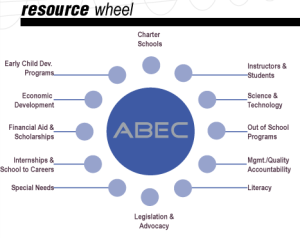Eight problems with Common Core Standards
Correction: The original post said incorrectly that the Common Core was written with no public dialogue or feedback from experienced educators. The post now says there was insufficient public dialogue and feedback from experienced educators.
This was written by Marion Brady, veteran teacher, administrator, curriculum designer and author.
E.D. Hirsch, Jr.’s book, “Cultural Literacy: What Every American Needs to Know,” was published March 1, 1987.
So it was probably in March of that year when, sitting at a dining room table in an apartment on Manhattan’s Upper East Side, my host — a publishing executive, friend, and fellow West Virginian — said he’d just bought the book. He hadn’t read it yet, but wondered how Hirsch’s list of 5,000 things he thought every American should know differed from a list we Appalachians might write.
I don’t remember what I said, but it was probably some version of what I’ve long taken for granted: Most people think that whatever they and the people they like happen to know, everybody else should be required to know.
In education, of course, what it’s assumed that everybody should be required to know is called “the core.” Responsibility for teaching the core is divvied up between teachers of math, science, language arts, and social studies.
Variously motivated corporate interests, arguing that the core was being sloppily taught, organized a behind-the-scenes campaign to super-standardize it. They named their handiwork the Common Core State Standards to hide the fact that it was driven by policymakers in Washington D.C., who have thus far shoved it into every state except Alaska, Minnesota, Nebraska, Texas, and Virginia.
This was done with insufficient public dialogue or feedback from experienced educators, no research, no pilot or experimental programs — no evidence at all that a floor-length list created by unnamed people attempting to standardize what’s taught is a good idea.
It’s a bad idea. Ignore the fact that specific Common Core State Standards will open up enough cans of worms to keep subject-matter specialists arguing among themselves forever. Consider instead the merit of Standards from a general perspective:
One: Standards shouldn’t be attached to school subjects, but to the qualities of mind it’s hoped the study of school subjects promotes. Subjects are mere tools, just as scalpels, acetylene torches, and transits are tools. Surgeons, welders, surveyors — and teachers — should be held accountable for the quality of what they produce, not how they produce it.
Two: The world changes. The future is indiscernible. Clinging to a static strategy in a dynamic world may be comfortable, even comforting, but it’s a Titanic-deck-chair exercise.
Three: The Common Core Standards assume that what kids need to know is covered by one or another of the traditional core subjects. In fact, the unexplored intellectual terrain lying between and beyond those familiar fields of study is vast, expands by the hour, and will go in directions no one can predict.
Four: So much orchestrated attention is being showered on the Common Core Standards, the main reason for poor student performance is being ignored—a level of childhood poverty the consequences of which no amount of schooling can effectively counter.
Five: The Common Core kills innovation. When it’s the only game in town, it’s the only game in town.
Six: The Common Core Standards are a set-up for national standardized tests, tests that can’t evaluate complex thought, can’t avoid cultural bias, can’t measure non-verbal learning, can’t predict anything of consequence (and waste boatloads of money).
Seven: The word “standards” gets an approving nod from the public (and from most educators) because it means “performance that meets a standard.” However, the word also means “like everybody else,” and standardizing minds is what the Standards try to do. Common Core Standards fans sell the first meaning; the Standards deliver the second meaning. Standardized minds are about as far out of sync with deep-seated American values as it’s possible to get.
Eight: The Common Core Standards’ stated aim — “success in college and careers”— is at best pedestrian, at worst an affront. The young should be exploring the potentials of humanness.
You can read the full article here.

